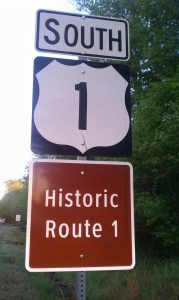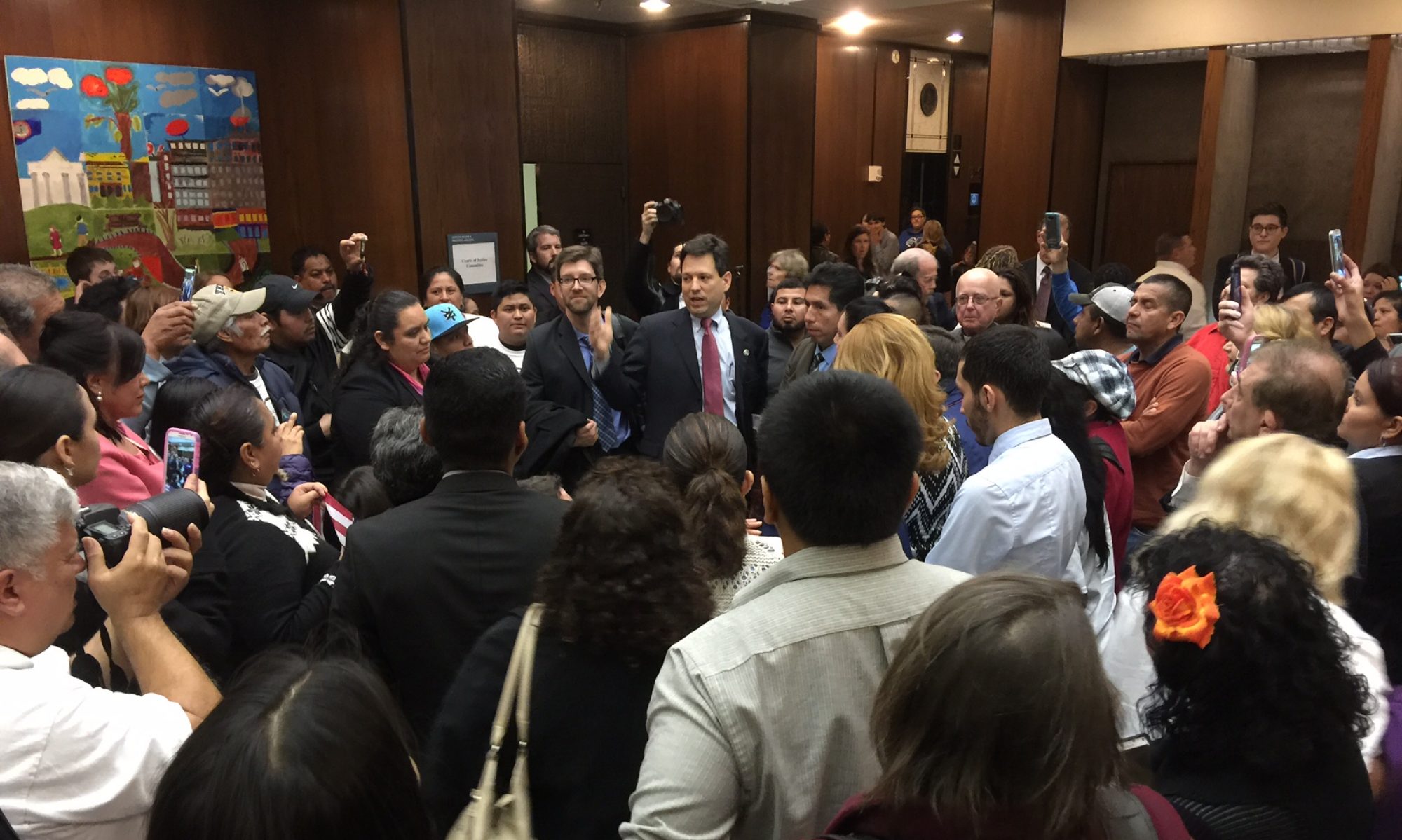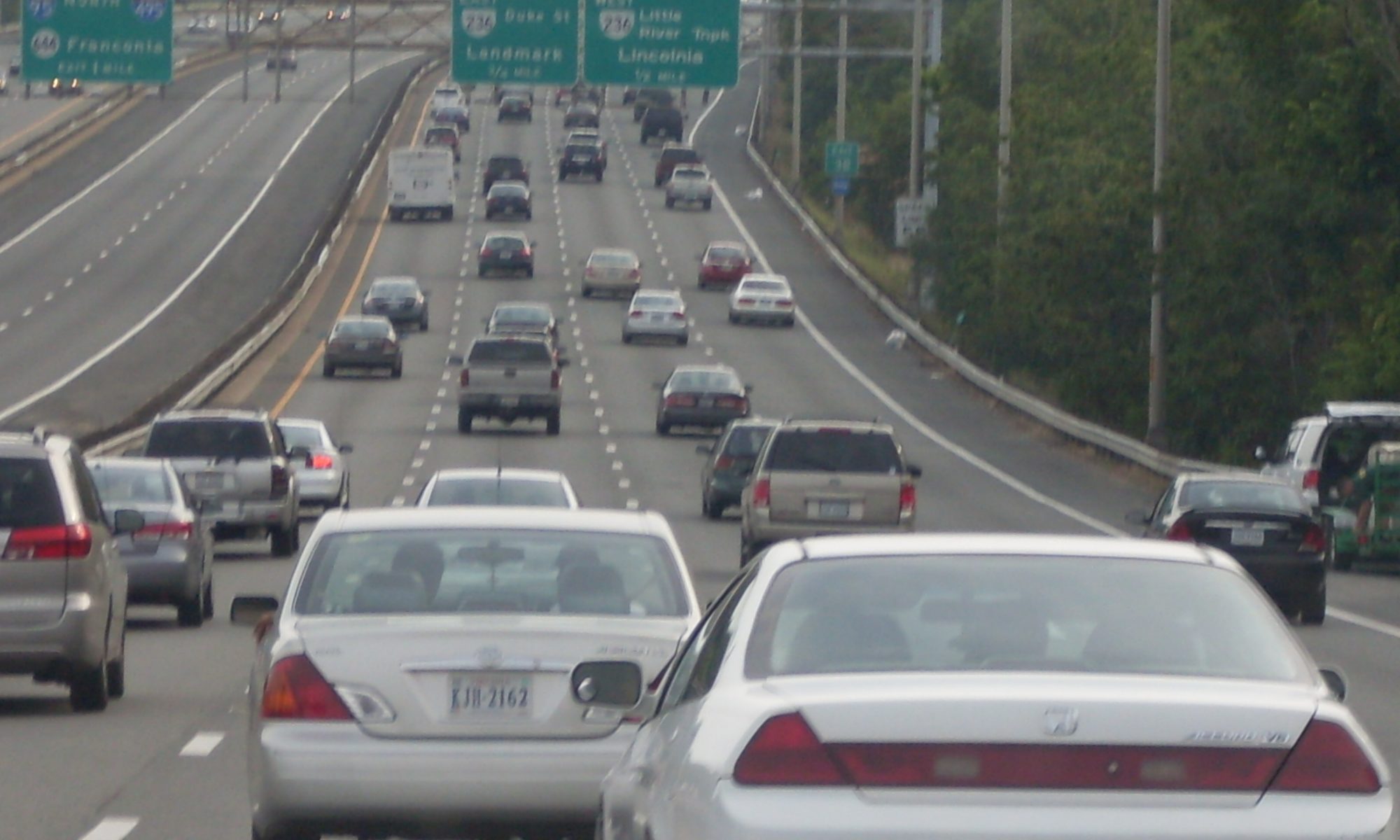Time spent stuck in traffic is time that could be spent more productively, being with family, coaching kids’ sports or working. When I grew up in Mount Vernon, congestion in Northern Virginia was virtually non-existent. You could get from A to B without encountering gridlock. In July, 2009, the Washington Post reported that Northern Virginia has the second-worst congestion in the United States and it is getting worse. Studies say that congestion costs the average Virginia driver $1,000 per year in lost productivity due to lost fuel, accidents, vehicle maintenance, and most importantly – lost time.
U.S. 1 from Woodlawn to Beacon Mall is congested every weekend and backed up north and south of Fort Belvoir every weekday. Improving U.S. 1 is my number one priority.
My Vision for Route 1
The Federal and State Government have spent over $10 billion on the Woodrow Wilson Bridge, Mixing Bowl and I-495 and traffic conditions are virtually the same as before improvements were made. Investments in I-95 have shifted bottlenecks south while generating more exurban development. The I-95 Occoquan Bottleneck still remains the worst chokepoint in Northern Virginia. I worked with local leaders and the Governor in 2020 to add one line southbound at no cost to taxpayers.
More than 2 million new people are coming to the D.C. Metropolitan Area in the next 20 years and we cannot continue to invest in transportation the same way. It is time to focus investments on rail and transit.
Additionally, correcting these issues will require money. While in 2013, the General Assembly raised taxes for transportation for the first time since 1987, the new funds were only about a quarter of the documented infrastructure need which is why our Governors have continued to rely upon private toll road operators to fund major projects. Fortunately, when Democrats had the majority, we finally dedicated new revenues to transit including $500 million per year to Metro.
We also must innovate on tolling so that Virginia residents who made the initial investment in these roads receive some credit in tolling agreements relative to out-of-state users.
Moreover, gasoline taxes were originally designed as use taxes, taxes to measure one’s use of the highway — the more you drive, the more you pay. But with increased automobile efficiency and electric cars, new ways to pay for roads are needed.
Finally, traffic considerations are not adequately considered when local officials make land use decisions. This means that local governments can authorize more shopping centers, office buildings and other development without considering whether the transportation networks are adequate for these new developments. Zoning for jobs and retail without housing effectively pushes congestion further and further down the interstates, creating more sprawl and adding to demands for schools, sewers, drinking water and other public services, and creating more vehicle trips through our area instead of within it. All of these problems must be addressed before progress in Northern Virginia is strangled.
We must —
- Continue negotiating the Commonwealth’s contract with Transurban so we can fix the I-95 Occoquan Bottleneck at reasonable cost
- Complete U.S. 1 bus rapid transit from the Huntington Metro to Prince William County
- Begin the process of extending the Yellow Line to Hybla Valley, Fort Belvoir, and to Prince William County
- Finish the job on adding two new rails over the Potomac River at the Long Bridge to make high speed rail in the DC-Richmond-Norfolk-Raliegh-Atlanta Corridor truly possible
- Complete widening U.S. 1 to six lanes its entire length and include cycling and pedestrian paths along the entire corridor.
- Provide dedicated funding to bicycle and pedestrian improvements
- Focus development around nodes of transit

